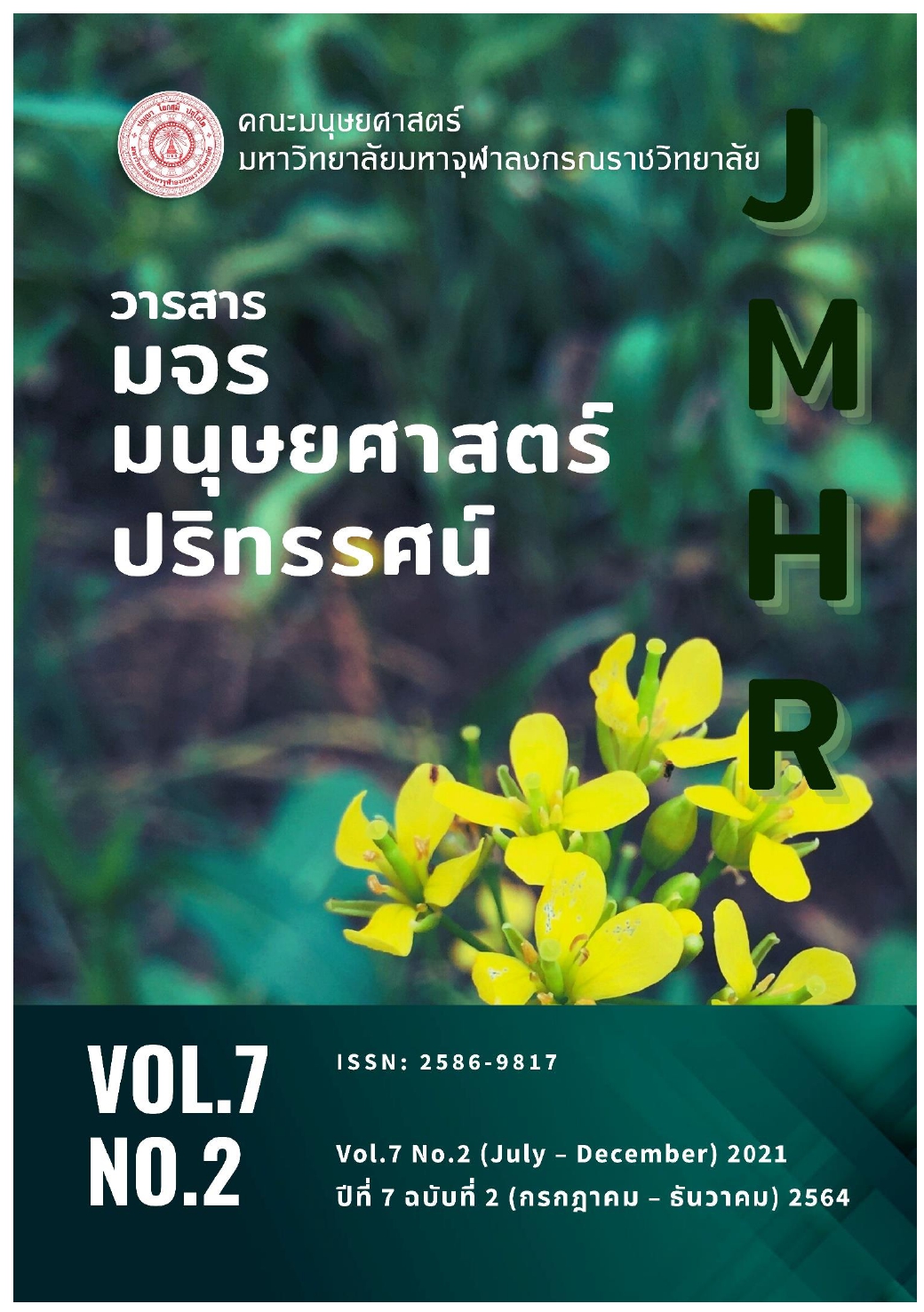คุณภาพชีวิตที่ดีตามแนวพุทธจิตวิทยา
คำสำคัญ:
คุณภาพชีวิต, ชีวิตที่ดี, พุทธจิตวิทยาบทคัดย่อ
การพิจารณาถึงคุณภาพชีวิตที่ดีนั้น ต้องมีองค์ประกอบ 4 ประการ เครื่องมือในการวัดผลของการมีคุณภาพชีวิตที่ดี ได้แก่ ร่างกาย จิตใจ ความสัมพันธ์ทางสังคมและสิ่งแวดล้อม และหากสามารถนำหลักพุทธธรรมมาประยุกต์ใช้ร่วมกับองค์ประกอบข้างต้นแล้ว ชีวิตย่อมมีคุณภาพเพิ่มขึ้น คุณภาพชีวิตที่ดีตามแนวพุทธจิตวิทยา หมายถึง คุณภาพชีวิตที่เกิดจากการพัฒนาตนตามหลักภาวนา 4 คือ กาย ศีล จิตและปัญญา โดยทำให้เกิด 1) คุณภาพกายและสิ่งแวดล้อมจากกายภาวนา ทำให้มีร่างกายที่สมบูรณ์แข็งแรง ปราศจากโรคภัย ไม่เบียดเบียน และไม่ก่อปัญหา รู้จักควบคุมตนไม่ให้ฟุ่มเฟือยเกินความจำเป็น ใช้อินทรีย์ เช่น ตา หู จมูก ลิ้น กาย เชื่อมต่อกับโลกภายนอก รูป เสียง กลิ่น รส สัมผัสได้อย่างมีสติ 2) คุณภาพทางจิตใจและสังคมจากศีลภาวนา ทำให้มีความสัมพันธ์ที่เกื้อกูลกับสิ่งแวดล้อมทางสังคม มีพฤติกรรมที่ดีงามกับเพื่อนมนุษย์ ไม่เบียดเบียน หรือสร้างความเดือดร้อนแก่ผู้อื่น แก่สังคม มีวินัย อยู่ร่วมกับผู้อื่น ปัญญาภาวนา เกิดความรู้ ความเข้าใจ รู้แจ้งเห็นจริง รู้จักพิจารณา วินิจฉัย แก้ปัญหาและดำเนินการต่าง ๆ ด้วยปัญญาบริสุทธิ์ ซึ่งรู้เข้าใจเหตุปัจจัย เห็นสิ่งทั้งหลายตามที่มันเป็น ปราศจากอคติ ทำให้มีจิตใจที่เข้มแข็ง เบาสบาย รู้จักพอดี พอใจในสภาพที่เป็นอยู่ มีทัศนคติที่ดีต่อตนเองและผู้อื่น มีความรัก ความอบอุ่น ความผูกพันกันในครอบครัวและเพื่อนมนุษย์ มีความอดทน เสียสละ สร้างสรรค์สังคม ส่งเสริมสันติสุข
เอกสารอ้างอิง
จิราภา เต็งไตรรัตน์ และคณะ. (2552). จิตวิทยาทั่วไป. กรุงเทพฯ: มหาวิทยาลัยธรรมศาสตร์.
พระครูภาวนาสังวรกิจ วิ. (สุวิทย์ คำมูล). (2561). การพัฒนาสุขภาวะองค์รวมสำหรับผู้สูงวัยตามแนวพุทธจิตวิทยา (วิทยานิพนธ์ปริญญาพุทธศาสตรดุษฎีบัณฑิต). พระนครศรีอยุธยา : มหาวิทยาลัยมหาจุฬาลงกรณราชวิทยาลัย.
พระพรหมคุณาภรณ์ (ป.อ.ปยุตฺโต). (2557). สุขภาวะองค์รวมแนวพุทธ. นครปฐม: วัดญาณเวศกวัน.
พระรุ่งเกียรติ อินฺทปญฺโญ (ศิริสุขเจริญพร). (2564). แนวทางการพัฒนาการปฏิบัติธรรมตามหลักพุทธจิตวิทยาสำหรับประชาชนในจังหวัดลพบุรี. วารสาร มจร.มนุษย์ศาสตร์ ปริทรรศน์. 7(1), 141-152.
พินิตศรี จีนชัยภูมิ และสุมาลี สว่าง. (2562). พุทธจิตวิทยากับการวิเคราะห์ความสัมพันธ์เชิงสาเหตุที่มีอิทธิพลต่อพฤติกรรมการตั้งใจซื้อเครื่องสำอางสำหรับตกแต่งใบหน้า (Makeup) ผ่านทางสื่อสังคมออนไลน์ ของผู้บริโภคในกรุงเทพมหานคร. วารสารมหาจุฬานาครทรรศน์, 6(7). 3637.
ราชบัณฑิตยสถาน. (2550). พจนานุกรมฉบับราชบัณฑิตยสถาน. กรุงเทพมหานคร: นานมีบุ๊ค พับลิชซิ่ง.
เริงชัย หมื่นชนะ. (2560). ระบบและทฤษฎีพุทธจิตวิทยา. วารสารมหาจุฬาวิชาการ, 2(1). 64.
ยงยุทธ วงศ์ภิรมย์ศานต์. (2557). คู่มือการพัฒนาตนเองแนวพุทธสำหรับผู้ให้การปรึกษา (ฉบับที่ 2). นนทบุรี: กรมสุขภาพจิต.
สำนักงานคณะกรรมการพัฒนาเศรษฐกิจและสังคมแห่งชาติ, สำนักนายกรัฐมนตรี. (2564). แผนพัฒนาเศรษฐกิจและสังคมแห่งชาติ (ฉบับที่สิบสอง พ.ศ. 2560-2564). สืบค้น 20 กรกฎาคม 2564, จาก https://www.nesdc.go.th/ewt_w3c/more_news.php?filename=&cid=297
สำราญ จูช่วย. (2554). การพัฒนาคุณภาพชีวิตและสังคม. กรุงเทพฯ: วิทยาลัยราชพฤกษ์.
ศิริ ฮามสุโพธิ์. (2543). ประชากรกับการพัฒนาคุณภาพชีวิต. กรุงเทพฯ: โอเดียนสโตร์.
ศิรินันท์ กิตติสุขสถิตและคณะ. (2556). คุณภาพชีวิต การทำงานและความสุข. กรุงเทพมฯ: โรงพิมพ์ธรรมดาเพรส.
อาณัติ นิลขาว. (2563). รูปแบบพุทธจิตวิทยาพัฒนาตนที่มีผลต่อองค์การแห่งการเรียนรู้. วารสารสังคมศาสตร์และมานุษยวิทยาเชิงพุทธ.5(3), 66.
The WHOQOL GROUP. 1995. The World Health Organization Quality of Life Assessment (WHOQOL): Position paper from the World Health Organization. Social Sciences Medicine, 41(10):1403-1409.






